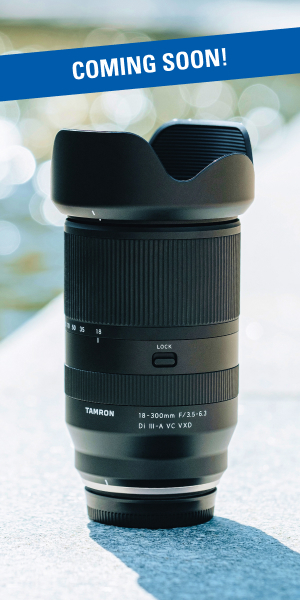Looking to elevate your astrophotography game? These night sky photography tips will help you capture breathtaking images of constellations, stars, the moon, and the Milky Way. With the right techniques and gear, even beginners can create stunning night sky photos. In this blog post from the camera lens experts at Tamron, you’ll learn practical strategies to improve your low-light shooting and get the most from your lens.
Here’s what you’ll learn:
- How to choose the best locations with low light pollution
- Ways to creatively integrate foreground elements for depth
- Recommended wide-angle Tamron lenses for night sky photography
- The ideal exposure settings for capturing crisp, low-noise images
- Simple lighting tricks to make your foreground pop
TIP 1: Find the Right Place to Shoot

The first of our night sky photography tips is to make sure you find an area that’s relatively free of light pollution. Light from cities and towns will drown out the stars and other night sky objects, particularly with long exposures. This interactive map will help you find the right place to shoot!
TIP 2: Enhance Your Composition by Including Foreground Elements

One of the most effective night sky photography tips is to thoughtfully include foreground elements in your composition. Adding visual anchors like trees, rock formations, cliffs, or rolling hills helps create a stronger sense of depth and scale—essential for dynamic astrophotography. These natural features contrast beautifully with the star-filled sky and can make your images more immersive.
To take it a step further, consider using a flashlight or LED panel to light paint the foreground. This technique not only adds dimension but also draws attention to your subject, creating visually striking, professional-quality night sky photos.
TIP 3: Best Wide-Angle Lenses for Night Sky Photography

When choosing the right gear for night sky photography, selecting a fast, wide-angle lens is essential. For mirrorless camera users, we recommend two top-performing Tamron lenses designed to maximize image quality in low-light conditions:
-
Tamron 17-28mm F/2.8 Di III RXD (Model A046) – This ultra-wide, fast-aperture lens is compatible with full-frame Sony E-mount mirrorless cameras. It offers excellent sharpness, a lightweight build, and a wide field of view ideal for capturing expansive night skies.
-
Tamron 11-20mm F/2.8 Di III-A RXD (Model B060) – Perfect for APS-C mirrorless systems including Sony E, Canon RF, and Fujifilm X mounts, this compact ultra-wide-angle lens delivers bright, edge-to-edge clarity and is perfect for incorporating both the starry sky and foreground elements into your shots.
Both lenses offer a constant f/2.8 aperture, making them ideal for astrophotography, Milky Way photography, and low-light landscape shooting. Their portability and sharp optical performance make them excellent choices for photographers who want to travel light without compromising on image quality.
TIP 4: Essential Exposure Settings for Night Sky Photography

One of the most important night sky photography tips is getting your exposure settings right. For most nighttime sky photos, a great starting point is to set your ISO to 3200, use the widest aperture available on your lens (such as f/2.8), and choose a shutter speed of around 20 seconds. This baseline exposure allows you to capture enough light from stars, constellations, and the Milky Way without overexposing the image.
After your initial shot, review your image and make adjustments as needed—lower the ISO slightly to reduce digital noise or tweak the shutter speed to minimize star trailing. These fine-tuning steps will help you achieve sharper, cleaner astrophotography results, especially when shooting in low-light environments.
Final Thoughts on These Night Sky Photography Tips
Mastering night sky photography is all about preparation, technique, and having the right gear. With these expert night sky photography tips—from choosing dark-sky locations and integrating foreground elements to dialing in the perfect exposure and using Tamron’s ultra-wide-angle lenses—you’ll be ready to shoot breathtaking images of the stars, moon, and Milky Way.
Ready to level up your astrophotography setup? Explore Tamron’s selection of fast, lightweight, and high-performance lenses at an authorized Tamron dealer near you or shop directly at the TAMRON Store. Your best night sky shots are just one lens away.
More Photo Tips | Watch Videos | Learn More About Tamron Lenses | Photo Gallery

